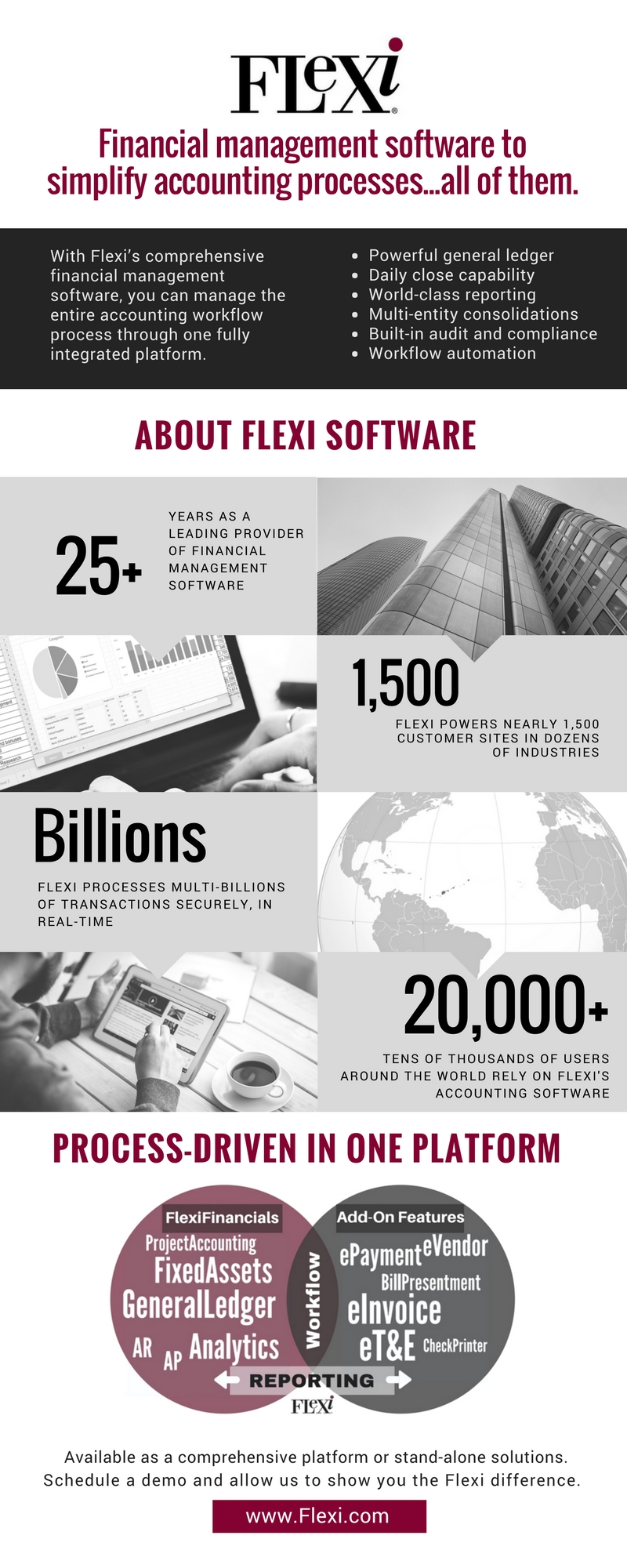The wave of tariff changes is sweeping across the insurance industry. For insurers, the change isn’t just about absorbing costs—it’s about adapting their financial systems to weather a volatile economic landscape.
Continue readingThe Hidden Costs Behind Large ERPs
Single-Provider vs. Best-of-Breed ERP: Which is the Right Solution For You?
Why Modern Accounting Systems Are Essential for the Future of Banking M&A
The 5 Most Important Features to Look for in Financial Management Software
Companies across numerous industries – healthcare, banking, investment, and others – rely heavily on their financial management software to streamline their operations. With so many options from which to choose, it can be difficult to know which software is right for your company. Below, you can learn more about the five most important features of the best financial management software platforms.
#1 – Cloud-Based Technology
Of all the features that you should look for in your financial management software, this is one of the most important. Cloud-based platforms are critical because they allow for collaboration across departments, they make it easy for individuals to access information from anywhere, and they make it simple to deploy software anywhere it is needed – even on the go. It ensures that everyone has access to the exact same data at the same time, too, which goes a long way toward preventing misunderstandings and the mistakes that can arise from them.
#2 – Workflow Automation
Your financial management software should be able to carry out many of your accounting processes automatically, as well. This saves you and your finance team a great deal of time and effort by reducing the number of repetitive tasks. What’s more, when you can automate based on your own rules, it also reduces the likelihood of mistakes that can lead to serious issues.
#3 – Ledger Consolidation
If your company consists of several branches, locations, or franchises, then it’s important to choose a platform that makes it easy to manage your finances across all entities with ease. In fact, look for an option that allows you to simplify these complexities and create reports based on any data you choose almost instantly. Consolidating ledgers across multiple entities should never be complicated, even when you are dealing with different current currencies.
#4 – Real-Time Data
Though historical data certainly plays an important role in making business decisions, access to real-time data takes things even further. Making business decisions can be tough as it is, but with access to real-time data, you can be confident that the decisions you are making are based on the most accurate and up-to-date information available. No matter what the situation or decision, real-time data makes it easier.
#5 – Simplified Auditing
Finally, you should choose financial management software that provides you with a complete audit trail for every single transaction your company processes. This should include not only the original transaction, but also the workflow and all the approvals that led up to that transaction. This is a great way to ensure that you are following various guidelines, and it also allows you to produce compliance documentation in mere seconds.
Your financial management software is an important part of your business. You rely on it to understand how your company is faring at any given time, so the information you access should always be accurate and up-to-date. When choosing financial management software, be sure that it offers you these five features as well as the ability to customize reports and workflow automation to your company’s unique needs.
Why Having a Process Driven Accounting Software is Important
Flexi offers process-driven financial management software. Flexi’s comprehensive financial management software simplifies and automates the entire accounting workflow process, without compromising security. Flexi’s open architecture meets even the most stringent security requirements yet allows data to flow seamlessly with any system, whenever and wherever business needs dictate.
Flexi delivers all the rich features you’d expect in a top tier accounting solution, but without the high cost. With quick implementation that can be deployed on-premises, in the cloud or in a hybrid environment, Flexi will not only simplify your accounting processes today, but also will have you ready to adapt quickly to market or business changes in your future.
Process-Driven Financial Management Software:
Built by Accountants, for Accountants
Flexi’s powerful accounting software was built to simplify the complex processes that accountants face every day. Flexi understands how stressful the period close is, how complicated multi-entity books can be, and how frustrating audits are when accurate reporting is not easily available.
The team at Flexi scrutinized every step of the process and developed accounting solutions with a sophisticated level of financial intelligence built into every module, designed to simplify every step of the process.
Flexi’s single platform is designed to allow data to flow seamlessly; integrated from one process to the next (illustrated here). So when it comes time to close the books, you have the data at your fingertips to move easily from soft close, period close, and handle all the auditor’s questions along the way.
Flexi
Flexi offers a full suite of products to help your accounting staff perform and deliver–and save time while doing it.
With Flexi, you can streamline and automate labor-intensive financial management functions using accounts payable, general ledger, project management, and fixed asset solutions.
Flexi is an industry leader for a reason. With expertise in all aspects of accounting and 25 years experience, the Flexi team can offer the best of the best. Even better, Flexi offers cloud-based web services that not only streamline processes, but also make data accessible 24/7 from any device with an internet connection. Learn more about Flexi accounting software solutions, or call 800-353-9492 to set up a demo today.
Why Banks & Financial Institutions Love Using Flexi for their Accounting Software
Many financial institutions feel stuck with software that’s not ideal for accounting. But Flexi works with your bank’s existing system to make it better, making it a top choice for banks and financial institutions. Whatever level of pain you’re experiencing with your accounting system, Flexi can alleviate with flexible banking accounting software.
you’ll agree that “good enough” is never enough for financials!
Flexi’s enterprise accounting platform works with your bank’s accounting system to make it better, with features like a world-class general ledger and financial reporting system.
Flexi’s 25+ year history is rooted in serving financial institutions around the world, including banks and credit unions. Flexi has built a platform around the unique needs of this industry, which requires superior security, speed and performance. With Flexi, you’ll enjoy:
- Daily close capability
- Real-time financial reporting
- Built-in audit and compliance
- Multi-entity consolidations
- Workflow automation
Integration That Improves Any Bank’s Accounting Software
Flexi’s open architecture allows you to choose the software that is right for your bank. We can integrate stand-alone modules like the general ledger software or financial reporting system into your existing banking accounting system. Or you can gain the ultimate speed and power with the entire financial management software platform, which is uniquely designed to allow financial data within the core general ledger to flow securely wherever it is needed, in real-time.
Benefits
Use of Flexi’s accounting software for your bank or financial institution will entitle your organization to these benefits, among many more:
- Continuous Close Capability
- Automated, Workflow-Driven Processes
- Multi-Entity Financial Management
- Real-Time Visibility
- Complete Audit Trail and Compliance Documentation
- Streamlined Reporting with Flexi’s Cloud Financial Report Writer
Flexi’s Suite of Accounting Solutions
Flexi offers a full suite of products to help your accounting staff perform and deliver–and save time while doing it.
With Flexi, you can streamline and automate labor-intensive financial management functions using accounts payable, general ledger, project management, and fixed asset solutions.
Flexi is an industry leader for a reason. With expertise in all aspects of accounting and 25 years experience, the Flexi team can offer the best of the best. Even better, Flexi offers cloud-based web services that not only streamline processes, but also make data accessible 24/7 from any device with an internet connection.
Learn more about Flexi accounting software solutions, or call 800-353-9492 to set up a demo today.
How CPM & Financial Reporting Go Hand in Hand
Financial leaders know the importance of accurate data, and as technology improves, so do the processes for obtaining and analyzing that data.
The financial industry is increasingly embracing an enterprise-wide approach to Corporate Performance Management (CPM). Financial reporting provides insight into the financial health of the organization, but CPM takes an even deeper dive, allowing organizational leaders a broader opportunity for analysis and stronger decision-making. And, by sharing this data with leaders of the organization outside of the finance department, stronger, more informed decisions can be made among the executive team.
What is CPM?
CPM is an area of Business Intelligence (BI) that takes a comprehensive look at organizational performance, including (but not limited) to financial performance. CPM monitors and manages organizational performance according to detailed forecasting and comparisons, allowing organizational leaders foresight into pipelines, analysis, and even customer or member satisfaction.
CPM is widely used enterprise-wide and includes budgeting, forecasting, dashboarding, and scorecards. The push for transparency in organizational performance and organizational goals serves the corporate landscape as decisions can be made cross-departmentally with all department leaders. This can facilitate better, stronger decisions while keeping all organizational leaders apprised of the current data, performance, planning, and forecasting.
Along with organizational performance, CPM software allows stakeholders to draw comparisons to the performance of peers and competitor organizations. However, quality data is of the utmost importance in order for accurate projections and comparisons. Financial reporting is traditionally Excel-reliant, but extremely complex processes like budgeting, forecasting, and consolidation, are best handled by CPM software due to the lower probability for manual errors. Data quality tends to be higher in CPM systems as opposed to spreadsheets, which have been historically prone to manual errors.
A single repository for data to be housed is considered a best practice in the industry, as it ensures accuracy and validity of data.
Flexi’s Financial Management Software [infographic]
Flexi Software Adapts to All Regulatory Changes so you Can Have Peace of Mind
Flexi offers comprehensive financial management software that simplifies and automates the entire accounting workflow process, without compromising security.
By providing open, cloud-based architecture that meets even the most stringent security requirements, data can flow seamlessly with any system.
With 25 years experience, the Flexi team has honed in on and perfected the diverse accounting needs of a variety of industries, including financial services, banking and credit unions, insurance, healthcare, travel and hospitality, retail and wholesale, logistics, and more.
Flexi is robust and flexible, and will not only simplify your accounting processes today, but also have you ready to adapt quickly to changing market or business needs, specifically in regulatory changes and compliance.
Flexi adapts to regulatory changes
As a Flexi user, you and your business can have peace of mind. Flexi adapts to regulatory changes in the industry, constantly keeping you up-to-date and on your toes.
Banks and credit unions
The banking industry is one of the most regulated industries in the United States with the Office of the Comptroller of the Currency (OCC), the Federal Reserve, and the FDIC keeping a close watch on regulation and compliance. Flexi solutions enable your organization to successfully compete in the dynamic banking and credit union markets. Automate and streamline your financial processes with the tools and controls to support complex regulatory requirements and changing market demands in the banking, credit union, and financial services industries.
Healthcare
Healthcare is another highly-regulated industry, and Flexi can help streamline and automate your labor-intensive financial management function in various healthcare industries. Flexi solutions enable your organization to successfully compete in the dynamic and volatile healthcare market. Automate and streamline your financial processes to support complex regulatory requirements and changing market demands in healthcare.
Other industries
While banks, credit unions, financial services, and healthcare are very highly regulated, Flexi is prepared to handle regulatory compliance for a variety of other industries as well. Flexi takes the guesswork out of the equation, preparing you and your team for success.
The bottom line
As an industry leader, Flexi can help your business succeed, regardless of your industry. With expertise and 25 years experience, the Flexi team can offer highly-specialized support for your specific and unique needs. Flexi’s product solutions are cloud-based web services that not only streamline processes, but also make data accessible 24/7 from any device with an internet connection.
Learn more about Flexi and how we can help you adapt to regulatory changes and see how Flexi can partner with your business today.





 Sample Cost for a Mid-Sized Insurance Company
Sample Cost for a Mid-Sized Insurance Company
 Why Flexi?
Why Flexi? 







